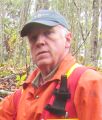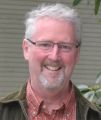Convening for Action in Shelly Creek: “Because the stream is pushing so much water through, the trees and land around the stream are eroding,” said Peter Law, Mid Vancouver Island Habitat Enhancement Society, in a newspaper interview (November 2017)

“We decided to look into what was causing the sediment load that was making the stream wider and reducing the pools. We did a survey, looking at every metre of the stream to find the sediment source and to see if it was coming from one site, or many,” stated Peter Law. MVIHES, working in partnership with the City of Parksville, the Regional District of Nanaimo, Pacific Salmon Foundation and the Partnership for Water Sustainability in B.C. co-funded an engineering study on how to restore watershed hydrology, prevent stream erosion and ensure fish survival.










